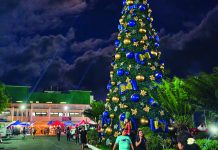
In Northern Samar
TACLOBAN CITY — As part of its continuing commitment to peacebuilding and social reintegration, the provincial government of Northern Samar distributed P1.4 million in livelihood and immediate assistance to 36 former rebels under the Local Social Integration Program (LSIP).
The turnover was held during a completion ceremony on Wednesday, October 29, at the University of Eastern Philippines (UEP) Centennial Hall in Catarman town.
Implemented through the Provincial Social Welfare and Development Office (PSWDO), the LSIP provides rehabilitated members of the New People’s Army (NPA) with basic literacy and livelihood training, psychosocial support, and capacity-building activities. These interventions aim to help them acquire new skills, regain self-reliance, and become productive members of their communities.
Governor Harris Ongchuan, who also chairs the Provincial Task Force to End Local Communist Armed Conflict (PTF-ELCAC), led the distribution of assistance and lauded the former rebels for choosing peace over armed struggle.
“Each of you is proof that peace is possible — that despite the wounds of the past, there is always hope to rise again, change for the better, and become an inspiration to others,” Ongchuan said. “To our peacebuilders, remember that this graduation is not the end but the beginning of your mission as defenders of peace.”
He also expressed gratitude to the provincial government’s partner agencies and organizations for their continued collaboration in sustaining peace and development in Northern Samar — a province that has long been affected by communist insurgency in Eastern Visayas.
Northern Samar has been a long-standing area of concern for the government’s campaign against communist insurgency in the Eastern Visayas region.
The declaration of places like its provincial capital of Catarman as “insurgency-free” marks a major milestone: it signals that government, military, local government units (LGUs) and communities have built sufficient capacity to hold peace and security without heavy support from external forces.
Also, the shift from active guerrilla fronts toward surrenders, reintegration, and socioeconomic development reflects the government’s “whole-of-nation” approach (infrastructure + livelihood + social services) rather than purely military solutions. For example, roads and connectivity projects in remote areas of Northern Samar are explicitly linked to weakening insurgent influence.
JOEY A. GABIETA



